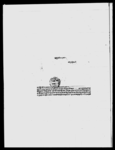A rukkā from King Pratāpasiṃha requesting a supply of sugandharāja flowers from the amālidāra of Patan (VS 1832)
ID: DNA_0013_0071
Edited and
translated by Astrid Zotter
in collaboration with
Christof Zotter
Created: 2014-08-16;
Last modified: 2018-06-21
For the metadata of the document, click here
The accompanying edition, translation/synopsis and/or commentary are available under the terms of the Creative Commons Attribution-ShareAlike 4.0 International License
Abstract
As his bhitrenī desires to offer one hundred thousand sugandharāja flowers to Guhyeśvarī, this rukkā of King Pratāpasiṃha orders the amālidāra of Patan to collect flowers from his district and deliver them to the court of Kathmandu.Diplomatic edition
[1r]
1श्रीदुर्गासहाय\1श्रीगुह्येस्वरि[royal seal]1स्वस्तिश्रीमन्महाराजधिराजकस्यरुक्का¯¯¯¯¯¯¯¯¯¯¯¯¯¯2आगे•पाटंकाअमालिदार•प्रति•भित्र्यानिवाट¯ ¯ ¯कनशुकंधराज
3कोफुल्•येकलाष•अर्पंभयाकोछ•तिंम्राअंवलमहाजतिशुकंदरा
4जकोफुल्छ•टिपाई•गनाई•जतिजतिहुंछलेषासितकाठमाडौदर्वा
5र•दुवार्याछेउल्याउ•सर्वथाइतिसम्वत्१८३२आषडशुदि८रोज५शुभं
[1v]
1⟪२७९⟫1⟪(३४)⟫1⟪३८०⟫1मोहनमुथाTranslation
[1r]
[May] venerable Durgā help [us]!
Venerable Guhyeśvarī (text: Guhyesvari)
Hail. [This is] an executive order (rukkā) of the supreme king of great kings.
[My] bhitrenī1 has vowed to make an offering of one hundred thousand sugandharāja (text: śukaṃdharāja) flowers to - - - (i.e. Venerable Guhyeśvarī). Pluck and count however many sugandharāja (text: śukaṃdarāja) flowers there are in your district (ambala) [and] bring [them] by all means together with an account stating how many [there are] to the gatekeeper (dvāre, text: duvāryā) of Kathmandu Palace (darabāra).
Thursday, the 8th of the bright fortnight of Āṣāḍha [in the Vikrama] era year 1832 (1775 CE). Auspiciousness.
[1v]
278
(34)
3802
[signature:] Mohanamuthā
Commentary
The document has previously been edited together with a rendering into modern Nepali by D.R. Panta 1968: 28. Panta explains that the bhitrenī, which he renders as "queen" (rānīsaheba) had made the pledge (bhākala) to offer the flowers. When texts prescribe the offering of flowers in auspiciously large numbers, such as one thousand or one hundred thousand, this may at first sight appear hyperbolic (Zotter 2013: 319-20), but as the present document shows such offerings are indeed literally put into ritual practice. In the current practice, the offering of a lakh of flowers actually often comprises 125,000 (savālākha) counted items. Such offerings are usually spread out over a longer period, with the pledge stated in a formal ritual commitment (saṃkalpa) during the first act of offering. Separate individual offerings of fresh flowers follow until the required number is fulfilled.


